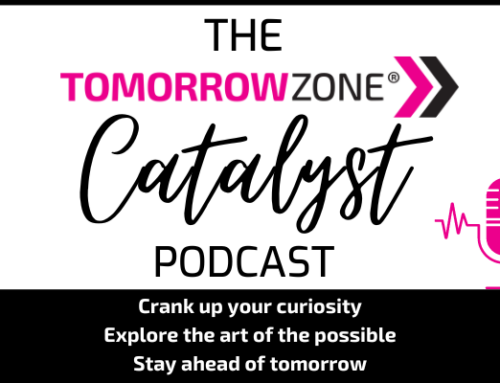
For two decades, Agile techniques have brought tremendous speed, innovation, and customer focus to the software world. More than its value as a software delivery methodology, Agile is a mindset, a way of thinking about and dealing and ambiguity.
Agile core principles center on enhancing productivity and communication. Placing more value on responding to change than following rigid plans. In times like these, when ambiguity and uncertainty are high, agile practices are incredibly beneficial beyond the software team.
Many forward-thinking companies in our industry are adopting a variety of agile practices. It’s not a fad, with the continuing threat of digital disruption, digital transformation necessity, and pandemic-driven uncertainty, agility, and adaptability are vital to survive and thrive.
There are many benefits of adopting agile principles across an organization. As one senior equipment finance technology leader shared, their pre-crisis investment instituting scalable-agile principles and architecture across their enterprise paid off handsomely. Educating their leadership team to adopt organizational agility practices enabled their team to respond during the COVID19 crisis rapidly. It helped them to design and launch a new product in two weeks.
Responsive agility is possible when you invest in building a healthy organizational innovation culture coupled with a robust technology architecture. It’s not a quick journey, and a great deal of work in the short term, but investment in developing an innovation capability in your organization pays off in the long run.
From Pushing for Perfection to Pausing for Reflection
Leadership expert John Maxwell insightfully stated, “Experience is not the best teacher; evaluated experience is the best teacher. Reflective thinking is needed to turn experience into insight.” Leaders and teams that make time to pause, get curious, and reflect on lessons learned can apply those lessons to adapt and improve continually.
Pause, reflect, learn, adjust, repeat. This process is one of the core practices in agile software development. But it’s not just for software delivery. In rapidly changing situations, learning forward is paramount. The agile method of reflecting and applying learning as you move forward applies to the world we live in now. When predictability seems low, there is high value in stopping to reflect on what is or is not working to adapt and adjust as you move forward.
From Narrow Silos to Holistic Systems Thinking
An oft-quoted proverb in the technology world states, “Before you automate, review your processes because if you automate chaos, all you get is faster chaos.” It may sound cliché, but it’s true. Too often, equipment finance companies find themselves implementing software to solve a people, process, or policy issue. The best technology in the world will not remedy ineffective practices. Systems thinking and process mapping can help to identify the real problem.
Taking a cross-functional and holistic look at your end to end processes on multiple dimensions and from various lenses helps paint a picture of what is going on in your business. Once you can see the current state of things, the handoffs, and the interconnections, you can go about identifying and prioritizing meaningful action. Then you can create the roadmap for the future.
Often, a perceived problem causing a client to reach out to me is masking the real pain, revealing itself once we dig in and look at the situation from multiple perspectives. The original hypothesis might be, “Our processes are inefficient, and we are not responding timely to customer requests; therefore, we need to replace our system, help us choose which one.”
When we dive in and look at the perceived problem through new lenses, we make the current situation visible to reveal a path forward. The real problem may be a lack of standards, unclear roles or responsibilities, non-enforcement of policies. Please don’t invest in software to solve these problems; it can’t work by itself. Digital transformation is never only about technology.
From Project-driven to Product-driven
The traditional digital transformation approach is project-centric. Most companies quickly master project delivery if the scope and desired outcomes remain static. Traditional projects have a clear beginning and end with success measured in terms of scope, budget, and timing.
With shifting or unclear priorities, clinging to tradition becomes a challenge. High uncertainty, ambiguity, and accelerating change exacerbates the problem. In a dynamic changing business environment, you can flawlessly deliver a project (by traditional measures). Only to find it’s obsolete, even irrelevant in the customer’s eyes. This scenario plays out all across our industry, the situations vary, but the story is the same. “We spent all this money to build (insert your cool feature here), and barely anyone uses it.”
Forward-thinking equipment finance organizations are shifting to a product-driven operating model, centering on delivering customer desired outcomes to overcome these challenges. They measure success by value to customers.
According to a Gartner survey analysis, “About 40 percent of organizations use a product-centric model for software delivery, and that number will double to 80 percent by 2022.”
In an environment where conditions change infrequently, rigid traditional project management processes are sufficient. Most of us don’t live in that world. It’s time for a new approach.
Embracing product culture and mindset can enable the organizational agility necessary to navigate accelerating change and increasing uncertainty. Leadership teams that make this shift can make significant leaps forward instead of plodding ahead with incremental progress.
Considerations for Shaping Your Next Normal
- Do you see IT as a service provider or a strategic business partner?
- Does your approach to funding digital transformation initiatives allow for experimenting and adapting to business changes?
- Does your current technology architecture enable you to flex, pivot, and adjust to accommodate changing customer needs?
- Is your team prepared to deliver rapidly to respond to both customer evolution and customer disruption?
- Given the changing business environment, what processes would be valuable for your team to revisit?
- What have you learned from your own team’s pandemic response that you could apply in the future?
- What can you learn from your customer’s response? How does it alter your thoughts about the future?





